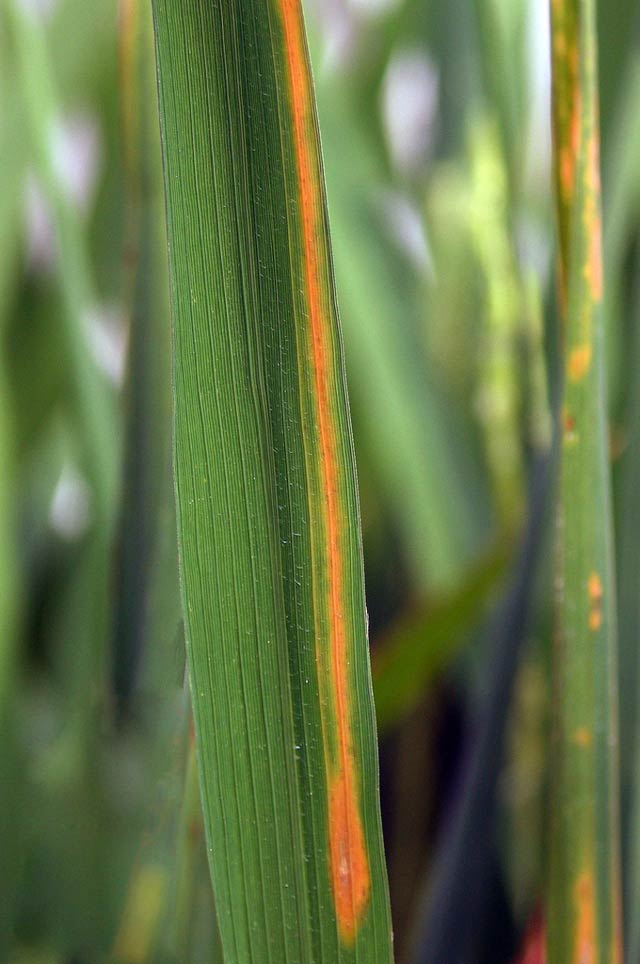Red stripe
 What it does
What it does
Red stripe causes formation of lesions on leaves.
Why and where it occurs
The disease usually occurs when the plants reach the reproductive stage, starting from panicle initiation. High temperature, high relative humidity, high leaf wetness, and high nitrogen supply favor disease development.
Red stripe of rice is common in Indonesia, Malaysia, Philippines, Thailand and Vietnam.
How to identify
Check leaves for lesions and discoloration.
- Initial lesions are pin-sized, and often yellow green to light orange in color. Older lesions appear as orange spots with an upward stripe.
- Lesions become necrotic and coalesce forming a blight appearance on the leaves.
- Lesions can also appear on the sheaths, but are less common.
The disease can be confused with orange leaf blight disease. It is hardly distinguishable from the bacterial leaf blight disease at severe and advanced stage of disease development.
To confirm red stripe, check the shape, size and color of lesions. An advanced lesion is characterized by an orange spot with a stripe, which advances towards the tip of the leaf.
Why is it important
Red stripe is a potential threat to rice production in Southeast Asia. However, no reliable quantification of yield losses has been done yet.
How to manage
- Use resistant varieties.
Contact your local agriculture office for an up-to-date list of available varieties. - Apply nitrogen based on actual crop requirements.
- Ensure optimum seeding rate and wider plant spacing also appear to reduce the disease.
- Ensure intermittent drainage during panicle initiation.
- Use benzimidazole fungicides (benomyl, carbendazim, and thiophanate methyl) to treat seeds.







